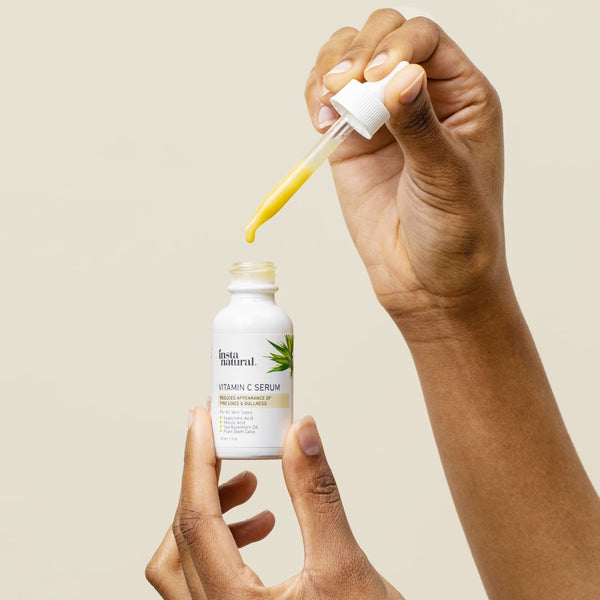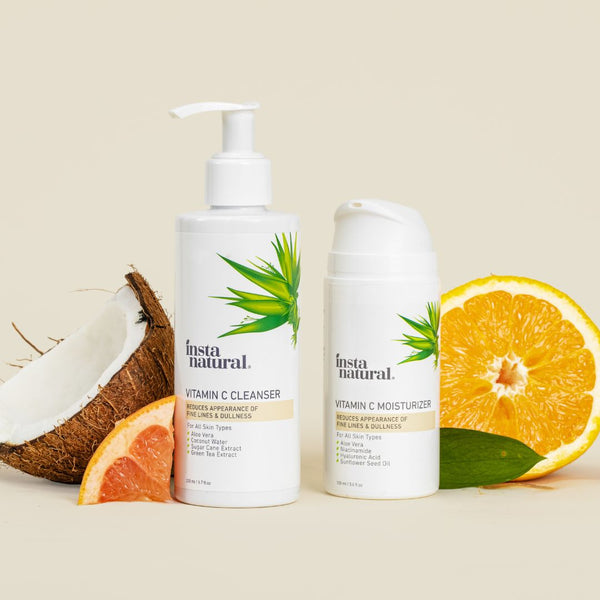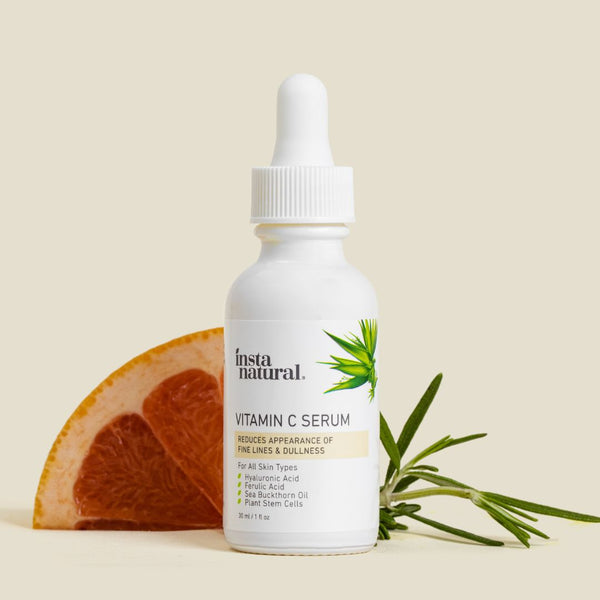
How to Improve Your Skin From Within
You've probably heard the expression "happiness is an inside job." The same principle applies to beautiful skin — happiness starts from within. Many doctors have pointed out the clear connection between skin and health: the better your health, the better your skin. Dr. Howard Murad, associate clinical professor of dermatology at the UCLA School of Medicine, says, "Healthy skin is a reflection of overall wellness."
Of course, taking care of your skin itself is still important, but as you pay more attention to your internal care, you might find that you need fewer and fewer external treatments. The secret to more youthful, radiant skin could be as simple as working from the inside out with the following 10 tips.
Omegas Equal Mega Skin Benefits
When you think of skincare products, you might think of the shelves in a drug store or the beauty counters at a department store. In reality, you'll find some of the best ingredients for skincare in the aisles of your local supermarket, including foods containing omega-3 fatty acids.
You've probably heard the array of health benefits that omega-3 can offer, and skin health is no exception. The fatty acids in omega-3 help keep the membranes of your cells healthy and strong. Cell membranes not only keep out harmful materials, but they also keep elements like water and nutrients in. Healthy membranes mean well-nourished and well-hydrated skin cells, which translates into softer, moisturized, and healthier skin.
Where can you find omega-3? Foods high in omega-3 include salmon, walnuts, tuna, and flax seeds. If you have trouble getting enough omega-3 in your diet, you can also try omega-3 supplements.
Water, Water, Water
Skin consists of cells and water makes up a large part of those cells. As a result, organs, including the skin, need proper hydration to work at peak performance. If you get dehydrated, chances are you can see that dehydration in your skin. Dehydrated skin loses its elasticity and becomes tight, dry, and flaky. The lack of elasticity hurts your skin's ability to keep its shape, which makes the skin more prone to wrinkles.
You don't have to worry as long as you're drinking enough of the right fluids. Water is the best choice but juice and herbal tea are good options when you desire some flavor. You may have heard the eight-cups-a-day rule, but recent research says otherwise. The Institute of Medicine now recommends 91 ounces of water per day for women and 125 ounces for men. If those amounts sound like a lot, remember that the water you get from foods — especially water-filled fruits and vegetables — counts too.
Stress Relief
Stress isn't good for any part of the body, skin included. Have you ever been stressed out or anxious about something, and had your skin break out in a rash or hives? Have you ever had a rash when you're overwhelmed? Stress can trigger those conditions.
Let's talk about the other side of this issue — stress relief is good for almost every part of the body, especially the skin. In this way, the mind and skin share a connection like skin and overall health. Below are a few suggestions to lower the effects of stress on your skin:

- Exercise: Exercise releases endorphins which are like nature's painkillers, except they kill stress as well. Learn more about exercise as it relates to your skin in the section below.
- Get enough sleep: When you get enough sleep, your body produces less cortisol — the stress hormone. Cortisol can actually break down collagen, so less cortisol means smoother, more elastic skin.
- Use stress-management tools: Whether it's yoga, deep breathing, journal writing, or meditation, have a go-to stress reliever that works for you. Practice your technique daily and add a little extra when you feel your stress levels rising.
- Take a time-out: Taking ten minutes out of your day to do something for yourself that you enjoy can help calm you. Take a bath, read a good book, or sit on your porch with a cup of tea.
- Go for a walk: Going for a brisk walk or a jog, even a brief one, can relieve stress by triggering the nerve cells in the brain that calm the senses.
Whole Foods
Vitamins and other supplements are a great way to fill in the gaps in your diet. Getting the recommended daily value (DV) of vitamins and minerals will help reduce inflammation and nourish your skin cells. But if you want the most benefit for your skin, try to get as many nutrients as you can from whole foods.
Many vitamins and minerals need other vitamins and minerals for full and proper absorption. Typically, whole foods offer the ideal formula for absorption and the greatest nutritional value.
For example, if you eat a cup of raw spinach, the plethora of nutrients you're getting includes Vitamin E, about 18% of your recommended DV, and Vitamin C, about 14% of your DV. Research reveals that Vitamins C and E, besides being powerful antioxidants, work in synergy. In other words, these vitamins improve absorption capacity of one another, doing more for the body than either could alone.
Exercise
As you know, the cardiovascular benefits of exercise are amazing. Exercise has another benefit, though — one you can see. Exercise promotes healthy skin in several ways. First, a workout pumps blood, improving circulation and, specifically, blood flow to the skin. Better blood flow means more nutrients and oxygen, which help keep skin cells healthy and vital.
Second, a good sweat is like a free mini-facial. When your body warms up and sweats, your pores dilate. As your skin excretes sweat, dirt and oil come with it, cleansing your pores in the process. However, be sure to clean your skin well after a workout so the grime doesn't linger on your skin.
Third, exercise keeps the skin elastic and looking young. In 2014, The New York Times reported research from McMaster University in Ontario that examined the effects of exercise on skin aging. The researchers divided participants into two groups: those who exercised and those who did not. Unsurprisingly, the researchers found that, in the exercisers who were 40 years and older, the dermis — the middle layer of the skin that helps skin keep its shape — resembled the dermis of a 20- or 30-year-old. The dermis was thicker and healthier than skin of sedentary participants of the same age.
Here's even better news if you don't yet exercise consistently. The researchers followed up with another experiment: They asked formerly sedentary people to follow a basic exercise program. The participants exercised for 30 minutes, twice a week, at 65 percent of their greatest aerobic capacity for three months. When the participants started the program, their skin layers looked as expected for their age group. Incredibly, when the researchers biopsied their skin tissue after completing the exercise program, the outer and inner layers resembled the skin of 20- to 40-year-olds. The participants were all 65 or older; exercise had given them elements of youth.
"ACE" Your Vitamins
Your skin will reap the benefits from any vitamin, however, for skin-specific benefits, Vitamins A, C, and E have proven especially powerful. Vitamin A, also known as retinol, promotes skin-cell regeneration and suppresses the sebaceous gland, your skin's oil producer. Look for Vitamin A in orange foods, including sweet potatoes and carrots.
Vitamin C is an antioxidant that helps build collagen and promotes tissue repair and growth. You can find Vitamin C in broccoli, bell peppers, and kale.
Vitamin E, another antioxidant, prevents your skin cells from aging prematurely and helps regulate Vitamin A levels. Sunflower seeds, almonds, and avocado are all excellent sources.
Substitute Fresh Fruit for Sugar ...
Sugary foods and simple carbohydrates trigger an insulin spike that can cause inflammation. If you crave carbs and sweetness, a good way to trick your taste buds — and benefit your skin — is to reach for fresh fruit instead. Most fruit contains fiber, which helps temper the effect that the fruit has on your blood sugar. Additionally, water in fruit helps keep your skin hydrated and nourished with antioxidants to keep your skin looking young.
... But Don't Give Up Chocolate
Yes, you may have to curtail your sugar intake, but you get a pass with dark chocolate. Cocoa has a hydrating effect on the skin, improving its elasticity. As a bonus, dark chocolate also has flavonols, especially potent antioxidants. For greatest benefit to your skin, snack on dark chocolate containing 70% cacao or higher. Chocolate has one more use for your skin — when you apply chocolate directly to the skin, the caffeine in chocolate can temporarily reduce any inflammation or swelling.
Drink Green Tea

Applied topically, green tea can also reduce puffiness and blemishes. After drinking a cup of green tea, empty the contents of the tea bag into a cup. Mix the tea leaves with honey to make a paste and apply the paste to your clean face. Leave the product on for 10 to 15 minutes and rinse clean.
Beef Up on Your Protein
Protein makes up a large part of the skin. Collagen and elastin — two critical building blocks of skin — are both proteins. Needless to say, consuming enough protein is an important part of keeping your skin healthy. A protein-centric diet has also shown the ability to reduce the inflammation contributing to acne.
Specifically, a 2007 study in The American Journal of Clinical Nutrition found that a diet consisting of 25% protein, a higher amount than the standard diet, improved symptoms of acne. To boost your intake, go for low-fat protein sources, such as seafood, poultry, low-fat dairy, and eggs.
What Comes Next?
Once you've applied these 10 tips to your internal skincare regimen, you should notice a significant difference in your skin's health. But to keep your skin looking its best, you can't neglect the exterior.
You've probably noticed that many of the products that are good for you internally also work topically. For example, a Vitamin C facial cleanser not only keeps your pores clear but also brightens your complexion with the nutrient's antioxidant power. Vitamin C's free-radical protection also helps combat wrinkles, dark spots, and other signs of aging.
Do you remember Vitamin A's alter ego, retinol? Well, look for a moisturizer containing retinol to give your skin the youthful radiance you’ve always wanted. Some retinol moisturizers also contain green tea — whose benefits were covered above — as well as Vitamin C. With those ingredients working for you and your skin, you receive hydration, anti-aging properties, and antioxidants to promote cell health.
You'll also want to exfoliate regularly to keep the top layer of your skin fresh, bright, and evenly toned. Look for exfoliating scrubs with ingredients such as Vitamin C for protection against the outside elements, and Niacinamide, a water-soluble vitamin that helps fight inflammation and unclogs pores.
Remember that your skin's topical health starts from the inside. The right foods, liquids, and lifestyle choices will do more for your skin than your topical treatments alone. While you don't want to neglect your skin's external health, you can do your skin a favor and work to improve its appearance and vitality from the inside out.



